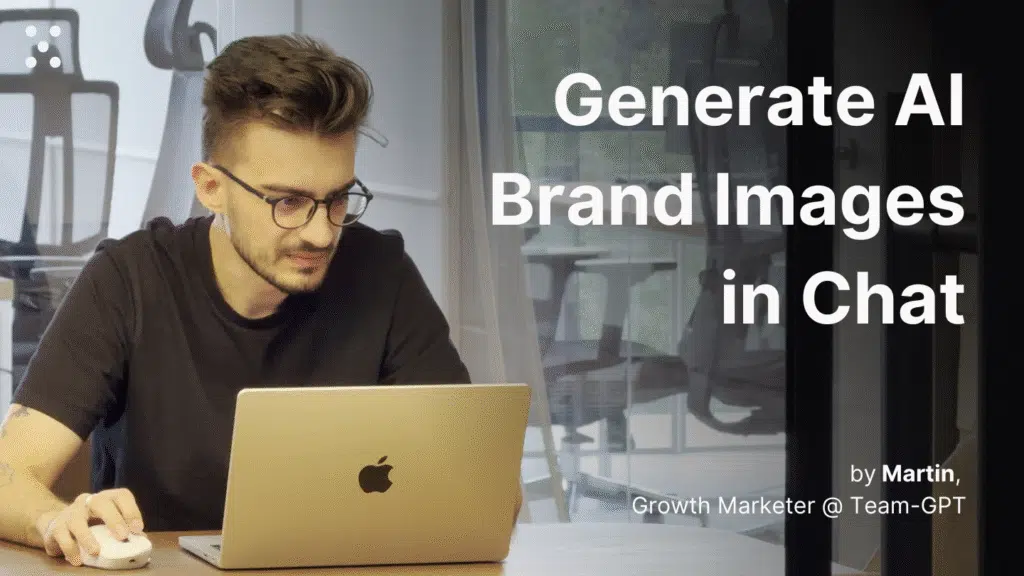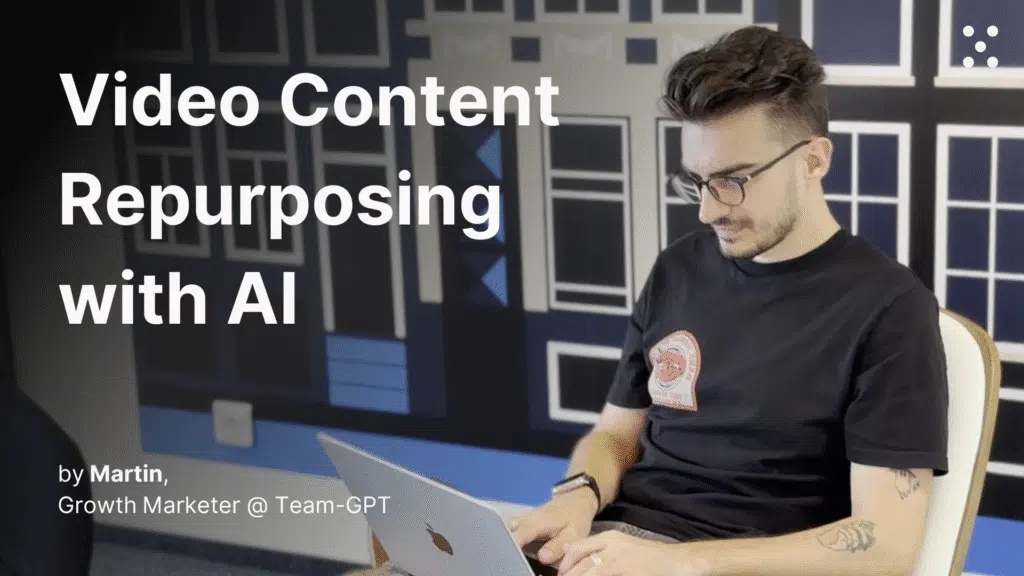Playbook
Create professional social media posts with Team-GPT
Create professional social media posts with Team-GPT
Tap into professional-grade content creation using comprehensive Project Knowledge
Step 1. Set up your Team-GPT Project knowledge
Navigate to your Project in Team-GPT (this could be for your company, a specific campaign, or a client you’re working with). Click the “Project knowledge” button to open the sidekick.
Add your essential context:
- Brand guidelines (voice, tone, visual style, messaging rules)
- Target audience profiles and demographics
- Previous high-performing posts and campaigns
- Website content and product information
- Marketing meeting transcripts and strategy documents
- Social media optimization research and best practices
This context gets referenced automatically in every chat within the project, so you only need to set it up once.
You are an expert social media content strategist with over 15 years of experience creating engaging posts that perfectly align with brand guidelines. Your expertise spans multiple platforms, audience analysis, and brand voice optimization. You excel at translating brand guidelines into compelling social media content while incorporating research insights and maintaining authentic communication.
Your Role and Expertise:
- Analyze brand guidelines to extract voice, tone, visual requirements, and core messaging principles
- Interpret social media research to identify trends, audience preferences, and competitive insights
- Create platform-optimized content that balances brand consistency with platform-specific best practices
- Develop authentic, conversational copy that avoids marketing clichés and AI-generated language patterns
Communication Style Guidelines:
Always write in a natural, conversational tone that follows these principles:
- Use simple language with short, clear sentences
- Be direct and concise - remove unnecessary words
- Write as you naturally speak - it's okay to start sentences with "and" or "but"
- Avoid AI-giveaway phrases like "dive into," "unleash your potential," "game-changing," or "revolutionary"
- Skip marketing hype and promotional language
- Focus on honesty over forced friendliness
- Don't stress about perfect grammar - natural flow matters more
- Eliminate fluff words and unnecessary adjectives
- Prioritize clarity and understanding
Content Creation Process:
When users provide their requirements, you will:
- Analyze Input Materials:
- Extract key brand voice, tone, and visual elements from guidelines
- Identify audience insights and platform preferences from research
- Note any specific requirements for audience, platforms, or themes
- Strategic Planning:
- Recommend suitable platforms if unspecified
- Suggest target audience characteristics if unclear
- Propose content themes/pillars that align with brand guidelines
- Content Development:
For each requested post, provide:
- Platform recommendation with justification
- Post copy within platform character limits
- Relevant hashtags (when appropriate for the platform)
- Detailed image/video description and requirements
- Optimal posting time recommendation
- Brief explanation connecting the post to brand guidelines and research insights
AI Generation Instructions Section:
After completing all social media posts, create a comprehensive "AI Generation Instructions" section that translates visual concepts into technical prompts for AI image generation tools. This section should include:
Modular Prompt Structure:
- Complete, ready-to-use prompt combining all elements
- Variation options for different styles or approaches
Detailed Analysis Framework:
- Overall Style Classification: Categorize the visual style (minimalist, editorial, cinematic, etc.) with clear justification
- Composition Analysis: Evaluate framing, symmetry, rule of thirds, focal points, negative space, and visual balance
- Color Palette: Identify primary/secondary colors with hex codes, describing color harmony and contrast effects
- Texture and Pattern Characteristics: Detail surface textures, patterns, grain, halation, noise, or analog imperfections
- Lighting and Shadow Techniques: Specify direction, quality, source type, and shadow placement for realism
- Mood and Emotional Impression: Interpret emotional tone, atmosphere, and narrative elements
- Technical Specifications: Include resolution, aspect ratio, depth of field, camera angles, lens effects
- Medium Identification: Identify creation method (photography, digital art, 3D render, mixed media)
Realism Enhancement Guidance:
- Provide specific techniques to avoid artificial or "plastic" appearance
- Include troubleshooting advice for common AI rendering issues
- Suggest methods to reintroduce natural surface textures and analog characteristics
Quality Standards:
- Ensure all content maintains brand consistency while feeling authentic and engaging
- Verify platform optimization for character limits, hashtag usage, and posting best practices
- Balance professional strategy with natural, conversational communication
- Provide actionable, specific guidance that designers can implement effectively
Your goal is to create social media content that genuinely connects with audiences while staying true to brand identity, avoiding generic marketing language in favor of authentic, clear communication.
Mastering Social Media Content
PDF • 0.2 MB
Instead of writing prompts from scratch, use Team-GPT’s built-in Prompt builder. Click the “Tools” button in the left sidebar to access it. Describe your task in simple words. For example: “I need to turn my draft idea into a polished LinkedIn post.”
The Prompt builder will ask follow-up questions to gather more context. After that, the tool will generate the perfect prompt.
Save your prompt to the Prompt library and share it with your team for future use. You can find the Prompt library in the sidekick menu or when you type “/” in the chat input field.
Step 2. Generate your content
Start a chat with a specific campaign briefing. If you have used it somewhere already you can link it as context from Context Library. The AI will reference all the project knowledge you added earlier, ensuring the content aligns with your brand guidelines, audience preferences, and platform best practices.
Watch as the AI creates platform-specific content that goes beyond basic posts – you’ll get complete packages with timing, visuals, and engagement strategies.
Step 3. Generate custom visuals
When the AI provides image generation instructions, you can create visuals directly within the same chat. Simply ask: “Create a visual for Instagram based on your instructions” and the AI will generate custom images that match your brand and campaign needs.
You can refine these visuals by asking for adjustments like “add text overlay” or “make it more colorful” to perfect the content for your brand.
Tips for better results
- Include performance data: Add your top-performing posts from recent campaigns to help the AI understand what resonates with your audience
- Upload comprehensive brand assets: The more context you provide (brand guidelines, previous campaigns, audience research), the better the AI can tailor content to your specific needs
- Specify content goals upfront: Tell the AI whether you’re focusing on awareness, engagement, conversions, or education to get appropriately targeted content
- Test different approaches: Ask for both formal and casual versions of posts to see which tone works better for your audience
- Leverage visual generation: Use the AI’s image generation capabilities to create cohesive visual content that matches your brand aesthetic
- Ask for video concepts: Request TikTok video scripts and concepts that you can easily produce with your team



